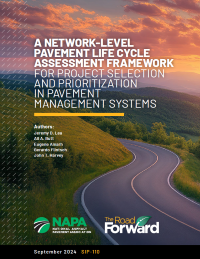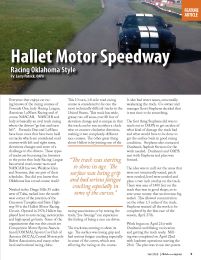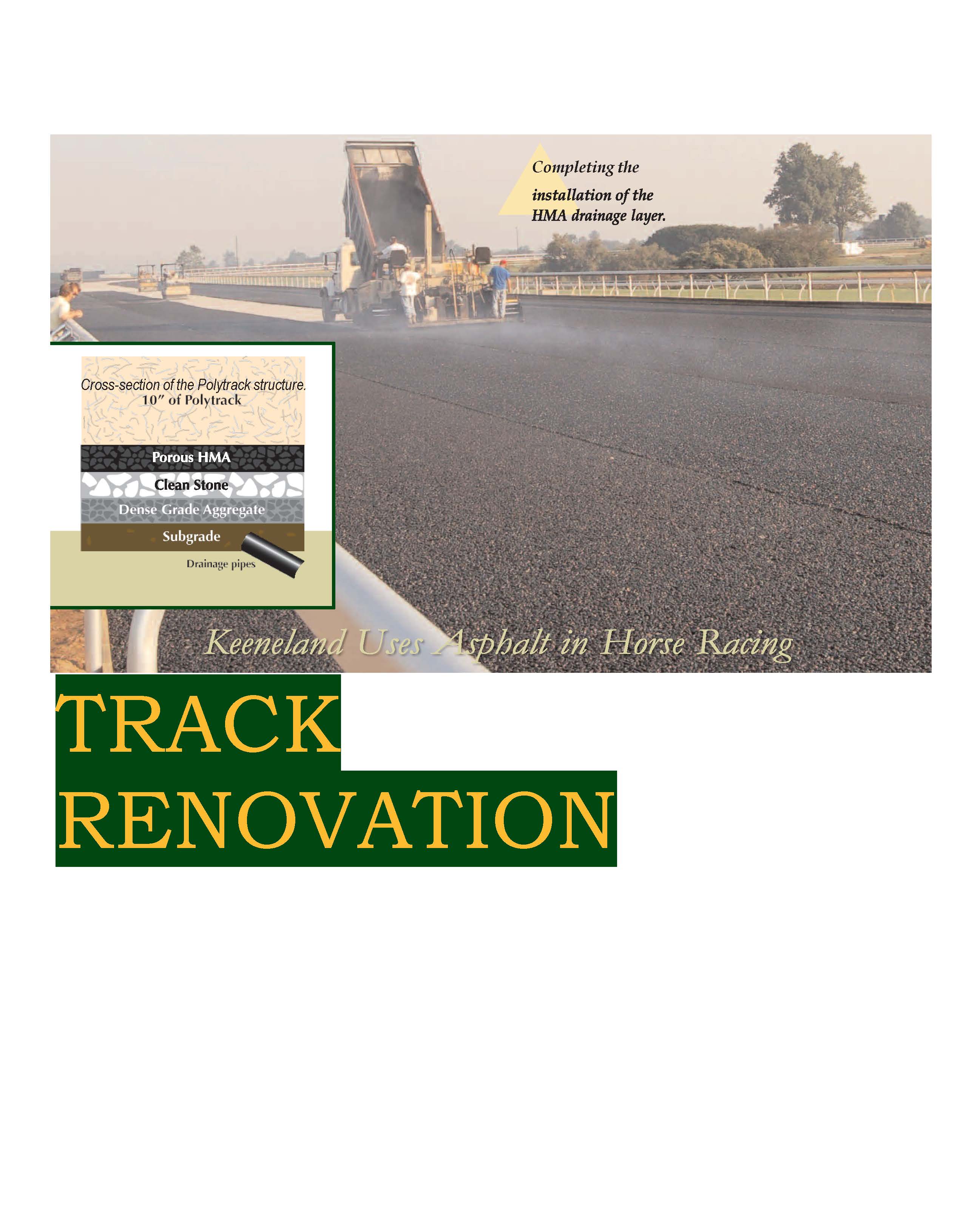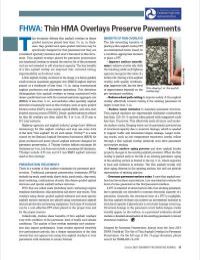Pavement Smoothness and Fuel Economy
Lanham, Md. – The Asphalt Pavement Alliance (APA) has released a new brochure on the impact of pavement smoothness on the fuel economy of vehicles.
Lanham, Md. – The Asphalt Pavement Alliance (APA) has released a new brochure on the impact of pavement smoothness on the fuel economy of vehicles.
Properly designed and constructed asphalt roads have an important quality that travelers appreciate… a smooth and quiet ride! Smoother roads also mean lower fuel costs, less vehicle wear and tear, and lower emissions. Watch this informative video that talks about several keys to achieving smoother asphalt pavements as well as how smoothness specifications are shaping the industry today.
In response to another round of attacks on asphalt pavement by the PCA and NRMCA, NAPA has released a special report critiquing a report from the Concrete Sustainability Hub (CSH) at MIT.
At the 65th Annual Quality Paving Awards Banquet, the Washington Asphalt Pavement Association (WAPA) and Washington State Department of Transportation (WSDOT) Secretary of Transportation, Roger Millar presented WSDOT's Eastern Region with six asphalt pavement quality awards, including Washington state's third consecutive Perpetual Pavement Award, which celebrates long-life asphalt pavements that reflect the characteristics of a Perpetual Pavement design.

Experts say that vehicles consume less fuel when traveling on smoother pavements. This makes sense intuitively. And, lower consumption of fuel conserves natural resources for a healthier environment.


Hallet Motor Speedway is one of many racetracks across America that has benefitted from asphalt smoothness and quick speed of construction. After opening in 1976, the track was beginning to show its age. A quick construction turnaround ensured a safe surface for a highly technical racecourse in time for opening day.
.png)
Paving a racetrack – particularly one as steeply banked as the all-new Atlanta Motor Speedway – is no small undertaking.

Sunmount Paving Co. takes on the high-banking turns at Atlanta Motor Speedway - and makes them even higher.

Intelligent Compaction Methods were used on airports in Utah and Alaska.

With the help of HMA and new racetrack surface technology, Keeneland Racetrack will lead the way in horse racing safety.

This brochure published by Asphalt Pavement Association of Michigan provides recommended application for HMA Ultra-Thin high value pavement enhancement.

Using more than 30,000 tons of asphalt, Superior Paving Corporation provided pavement on an array of pavement types: walking trails, tennis courts, basketball courts, competitive running tracks with strict tolerance requirements, long jump segments, light-duty parking bays, heavy-duty travel paths, a heavy-duty bus loop, and an extension of University Boulevard, a Virginia DOT owned road.

This document defines thin asphalt overlays as dense graded mixtures placed less than 1 1/2 in. in thickness. Thin asphalt overlays placed for pavement preservation are functional overlays to extend the service life of the pavement and are not intended to add structural capacity.
.jpg)
Developing long-life asphalt pavements is a sustainable and cost-effective objective that will help to maximize the nation's return on investment in airport infrastructure.

Runway 10R/28L has an interesting history with a first phase of the south runway completed in 1928 and its full length of 10,150 feet completed by 1958. In the early years, it consisted of a patchwork of asphalt and concrete depending upon when the various sections were built. In later years, the Airport Authority relied upon asphalt because of its ease of maintenance, most notably the construction of the north runway that was built entirely with deep-strength asphalt pavement.

The National Corvette Museum (NCM) in Bowling Green, Kentucky is more than a shrine to all things Corvette: It is also home to a super-smooth 3.2 mile automotive asphalt test race track; one whose paving specifications prohibited surface deviations exceeding a minuscule 1/8" (3 mm) around the track.

The Mid-Ohio Sports Car Course is a permanent road course with both a 2.4-mile, 15-turn configuration and a 2.25-mile, 13-turn lay-out located in Lexington, Ohio. It was originally constructed in 1962 for weekend sports car racing by local businessmen. In 1972 and 1990, the entire 2.4 miles of road course was resurfaced. The track is often referred to as the “country club” of racetracks.

For those who live near San Marcos, Texas, Harris Hills Raceway offers the perfect opportunity for racing aficionados to get together, race their own vehicles on a challenging track, and enjoy the camaraderie of like-minded enthusiasts—all without the risk of getting a ticket! You could say that racetrack is an oasis for “civilians” with the need for speed. With a thriving client base to satisfy, the condition of the track is an important investment for the family-owned business. When owner Bo Rivers realized it was time for some much-needed rehabilitation, he began looking for a paving contractor that could meet the track’s unique needs.

For the rehabilitation of its primary arrival runway, DFW knew it had to find a solution that would require the shortest amount of downtime, deliver the longest pavement life, require minimal interruption for scheduled maintenance, and maintain its status as a carbon-neutral airport.

The completed reconstruction of the airport will follow seven phases, starting in March 2020. During the entire reconstruction process, 4,800 feet on the runway have been open at all times. Ryan Marshall, Director of the Public Works Department, says his office is excited about bringing the airport up to specifications because the last reconstruction took place more than 30 years ago. “After the reconstruction is done, we will have an upgraded airport for planes to land and passengers to enjoy. We hope that after the coronavirus, the remodeled Cedar City Airport will become a destination hub for all that we have to offer with the Utah Shakespeare Festival, the Utah Summer Games, our diversified recreational activities, and our proximity to several national parks.”
NJAPA's Position on Thin Asphalt Overlays for Pavement Preservation.
The use of reclaimed asphalt pavement (RAP) in new asphalt mixtures has obvious advantages to the environment, pavement owners, and contractors.
This manual is published by the National Asphalt Pavement Association (NAPA) as an aid to designers. All reasonable care has been exercised in its preparation; however, NAPA makes no claim as to its accuracy. It remains the responsibility of professional designers to correctly interpret and verify the information presented.
This is a field evaluation summary of Thin Hot Mix Asphalt Overlay (June 20, 2016).
NCAT examined the wide range of scientific research and literature regarding pavement-vehicle interaction and found that current research shows that of the 3 factors that affect drivability — roughness, texture, and deflection.
NCAT examined the wide range of scientific research and literature regarding pavement-vehicle interaction and found that current research shows that of the 3 factors that affect drivability — roughness, texture, and deflection.
NCAT examined the wide range of scientific research and literature regarding pavement-vehicle interaction and found that current research shows that of the 3 factors that affect drivability — roughness, texture, and deflection.
Get the answers to the most frequently asked questions about the benefits of pavement preservation.
Ahead of the summer driving season, a new survey from the Asphalt Pavement Alliance (APA) finds U.S. drivers increasingly frustrated with the state of U.S. roads. The national survey found that drivers prefer well-maintained, safe, and smooth roadways; moreover they understand these qualities require periodic maintenance and financial investments
Arizona State University examined the wide range of scientific research and literature regarding mitigation strategies utilized to combat the Urban Heat Island (UHI) effect.
Whether at a business, a shopping center, a school, house of worship, recreation area,or apartment building, a parking lot is one of the first things a person sees when arriving at their destination. First impressions matter, and a poorly constructed or maintained lot can reflect negatively on an establishment.
This video examines why time constraints mean most potholes are patched the way they are, and why a more long-lasting fix would require far greater investment in Michigan's roads than is made now.
Roads are about more than getting from place to place. They help us realize dreams of far off places, opportunities, and adventure. The engineers and crews that design and build roads are dream builders, helping us all go farther. This celebrates you, the dream builders.
When it comes down to it, drivability is what makes the road the one you want to take. Asphalt pavements are the best solution when you want high performance. They are smooth, quiet, and safe. They can reduce noise at the point where the tire meets the road, and they are quick and easy to construct and maintain over time. That's drivability.
All roads require periodic maintenance to ensure a high level of performance and drivability. With asphalt, keeping things smooth, safe, and quiet is quick, easy, and cost effective. Asphalt. It's the answer to road age.
While you sleep, asphalt paving crews are hard at work to make your roads better. Asphalt pavements are quick to construct and easy and cost-effective to maintain. With construction in off-peak hours, roads can be kept safe and smooth with a minimum of disruption for the travelling public.